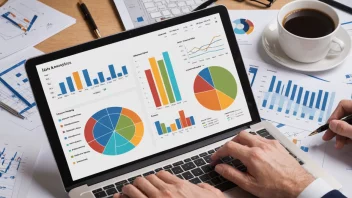What are demographic shifts?
Demographic shifts refer to changes in the characteristics of a population over time. These changes can include variations in age, gender, race, income, education, and geographic location. Understanding these shifts is crucial for businesses and policymakers as they influence consumer behavior and market dynamics.
How do demographic shifts affect market trends?
Demographic shifts can significantly impact market trends by altering consumer preferences and purchasing power. For example, an aging population may lead to increased demand for healthcare services and products, while younger generations may drive trends in technology and sustainability.
What are some examples of current demographic shifts?
Some notable demographic shifts include:
- Aging population: Many countries are experiencing an increase in the proportion of older adults, which affects industries like healthcare, retirement planning, and leisure.
- Urbanization: More people are moving to urban areas, leading to changes in housing, transportation, and retail sectors.
- Diversity: Increasing racial and ethnic diversity in populations can influence cultural trends, marketing strategies, and product offerings.
- Millennial and Gen Z influence: Younger generations are reshaping markets with their values, such as sustainability and digital engagement.
Why is it important for businesses to understand demographic shifts?
Understanding demographic shifts allows businesses to tailor their products and services to meet the changing needs of consumers. This knowledge can lead to better marketing strategies, product development, and customer engagement, ultimately resulting in increased sales and customer loyalty.
How can businesses analyze demographic trends?
Businesses can analyze demographic trends through various methods:
- Market research: Conduct surveys, focus groups, and interviews to gather data on consumer preferences.
- Data analytics: Utilize data analytics tools to interpret demographic data from sources like government statistics and market reports.
- Social media monitoring: Track social media trends to understand how different demographic groups engage with brands and products.
What role does technology play in understanding demographic shifts?
Technology plays a crucial role in collecting and analyzing demographic data. Advanced analytics, machine learning, and big data allow businesses to gain insights into consumer behavior and preferences, helping them stay ahead of market trends.
What challenges do businesses face when adapting to demographic shifts?
Some challenges include:
- Keeping up with rapid changes: Demographic shifts can occur quickly, making it difficult for businesses to adapt in a timely manner.
- Understanding diverse markets: Different demographic groups have unique preferences and needs, which can complicate marketing strategies.
- Resource allocation: Businesses may struggle to allocate resources effectively to target emerging demographic segments.
How can businesses stay ahead of demographic trends?
To stay ahead of demographic trends, businesses should:
- Continuously monitor trends: Regularly review demographic data and market research to identify shifts early.
- Be flexible: Develop adaptable business strategies that can quickly respond to changing consumer needs.
- Engage with communities: Build relationships with diverse communities to better understand their preferences and values.
What are the long-term implications of demographic shifts on the economy?
Long-term implications of demographic shifts can include changes in labor markets, shifts in economic power, and alterations in government policies. As populations age or diversify, economies may need to adapt to support different sectors and address new challenges.






